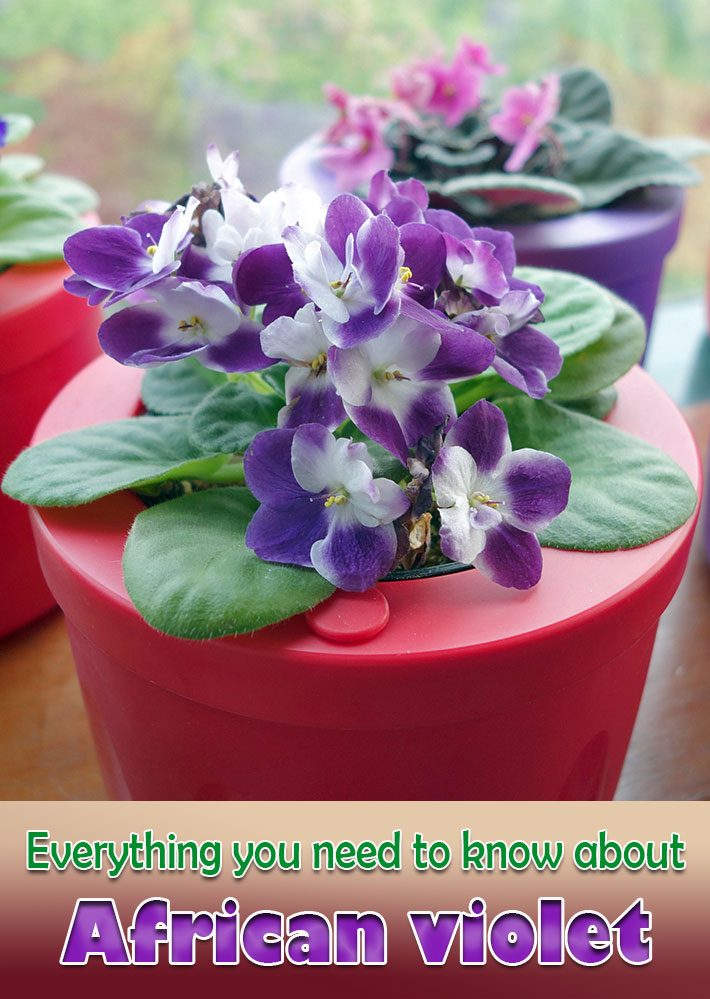
The African violet is a member of the family Gesneriaceae (or Gesneriads). It was discovered by Baron Walter Von Saint-Paul in 1892 and, upon its introduction in Europe, was baptized Saintpaulia ionantha. The genus Saintpaulia was named after its discoverer and the species name, ionantha, is Greek, meaning “having flowers like the violet’s.”
From that point on, the common name of “African violet” became popular, giving the impression that the genus is related to the true violet, Viola. In fact, the two genera are very different, botanically speaking.
There are numerous species of Saintpaulia, although few of them are actually cultivated. Most plants sold on the market are hybrids derived from Saintpaulia ionantha.
Because of its small size, the ease with which it blooms in the home and the wide variety of cultivars and hybrids available, the African violet has long been one of the most popular flowering house plants.
African violets come in shades of white, blue, purple, coral, pink and even yellow. The petals may be bicoloured, ruffled or even double. The various shades of green foliage may also be variegated. The leaf margins are sometimes finely serrated, ruffled or lobed. Finally, there are a number of miniature and hanging cultivars available.
A common complaint among amateur growers is the difficulty of maintaining beautiful flowers. However, provided that an African violet is given the proper growing conditions, it is relatively easy to obtain good results.
Light and temperature
Light
An African violet requires light intensity of 10,760 to 16,140 lux (1,000 to 1,500 foot-candles). Young plants grow best at 8,600 lux (800 f-c). All plants will remain at the vegetative stage if the light available remains below 5,380 lux (500 f-c).
To better illustrate the significance of these figures, 5,380 lux represents the amount of natural light that falls on a cloudy winter day, while 10,760 lux represents the amount received in a well-lit room on a clear spring day.
Light intensity is not a fixed value in a particular setting, but rather changes with the seasons and exposure to the sun. It is best to grow plants on a sunny windowsill with a southern exposure during the winter, although east and west exposures are also suitable.
From March to September, however, it is better to choose an east-facing window. Otherwise, the stronger rays of the sun may damage the fleshy tissue of the leaves by destroying chlorophyll, and dry brown spots will appear on the leaves. Alternatively, the plant may be set back from the window, or curtains or blinds used to shade it somewhat from the bright light.
Finally, the plant should be turned one quarter turn at each watering or once or twice a week to preserve its symmetry.
Unfortunately, it is not always possible to offer African violets ideal growing and light conditions. Some amateur growers have only windows that receive little sun, causing the plant to become etiolated, characterized by excessively long leaf stems. In such conditions, the plant will not bloom. Artificial lighting is a simple solution to compensate for a lack of natural light. Plants grown under fluorescent tubes will remain symmetrical and bloom almost constantly. African violets require at least twelve hours of light daily in order to bloom.
Temperature
The African violet is native to a tropical environment, where temperatures can climb to 30 to 32°C ( 86 to 90F )and never fall below 18°C ( 65F ).
This partly explains why it adapts so easily to household temperatures. Nonetheless, it is best to maintain a difference of approximately 5°C ( 40F ) between daytime and nighttime temperatures. Lowering the temperature at night will improve the plant’s appearance in a number of ways. First, the flowers will be about 25% larger. There will be more petals and their colours will be more intense. Moreover, the white borders on bicoloured flowers will be brighter.
Finally, since variegated cultivars require cooler temperatures, they should be placed lower down on plant stands.
African Violet Care
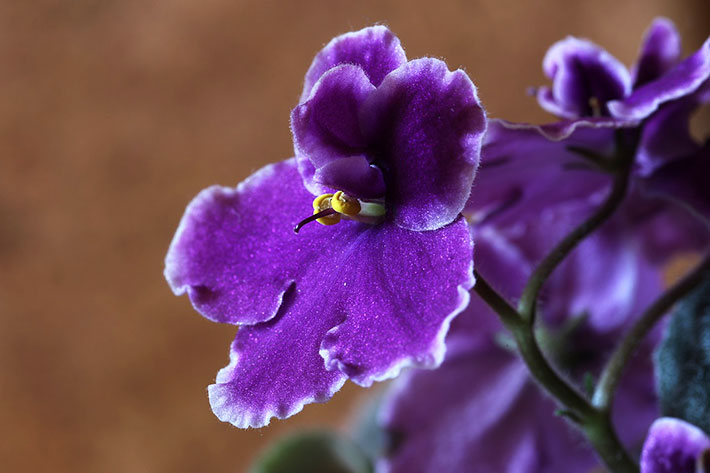
General grooming
African violets require little grooming. Dust the leaves with a small, soft brush, remove all dead leaves and flowers promptly and remove any offshoots (except in the case of hanging plants). Older plants often have a number of offshoots that interfere with blooming and make them less attractive. An older plant whose leaves are growing high up on its crown may be rejuvenated by repotting it more deeply. Some amateur growers even go so far as to cut the stem off just under the rosette and repot it in a new container, where it will sprout new roots.
Humidity
Being a tropical plant, the African violet requires high humidity, between 40 and 60%. This may be difficult to obtain, especially in the winter, when houses are heated. The leaves will curl when exposed to dry air and the quality of the blooms will suffer. Using a humidifier will remedy this problem. Another way of providing the plant with the necessary humidity is to place it on a saucer filled with gravel and water.
Watering
The frequency of watering will be influenced by the plant’s stage of growth and the soil composition, ambient humidity and amount of light. The plant must be watered as soon as the soil on the surface becomes dry but is still somewhat moist underneath. Add plenty of water, until it seeps through the drainage holes at the bottom of the pot, in order to moisten the root ball thoroughly. After one hour, remove any water still standing in the saucer.
It is important to use water that is slightly warmer than room temperature; cold water will cause spots to appear on the leaves. Moreover, blooms will suffer if the roots are chilled. Morning is the best time to water a plant. Watering at night promotes the development of fungus-related diseases, while watering in the afternoon may cause leaf spots to appear, especially if the plant is exposed to the sun while still wet.
Opinion varies on whether African violets should be watered from the top or bottom. Watering from the top will not cause any problems if the above instructions are followed. Water may also be placed in the saucer to be absorbed by the soil, provided that the plant is flushed from the top periodically to wash away fertilizer salts that accumulate on the surface. The same applies to containers equipped with a wick.
As a rule, it is important to avoid overwatering, so as not to reduce the amount of oxygen available in the soil. This will first affect the roots and then the entire plant. The weight of the pot is a good indication of when water is required.
Fertilization
Fertilizers are an important source of food for an African violet. A balanced formula such as 20-20-20 is suitable during the vegetative period. To flower, the plant requires more phosphorous; a 10-30-20 or 15-30-15 fertilizer is appropriate.
Many people like to fertilize their African violets once a month, following the manufacturer’s recommended dosage. Alternatively, 1/4 to 1/5 the regular dosage can be added with each watering, as this causes less shock to the plant. Finally, the plant should not be fertilized if it is dormant or ailing.
Potting soil, containers and repotting
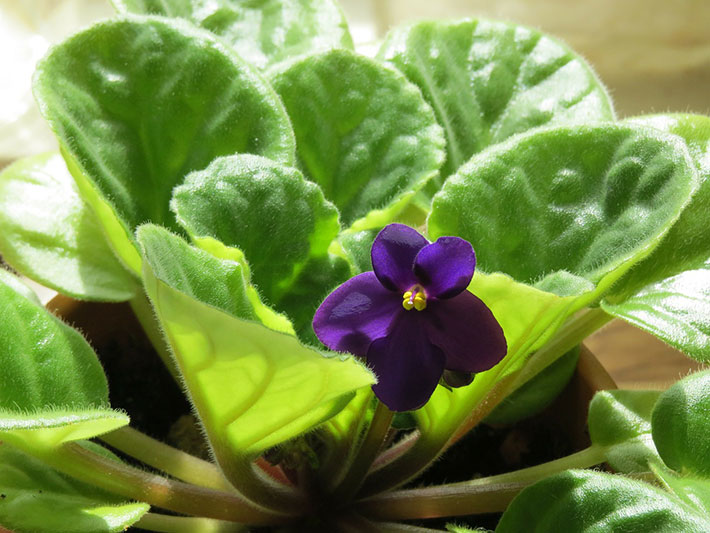
Potting soil
An African violet should be potted in light, well-aerated soil for good water and mineral retention. Amateur growers generally prefer soilless mixes, containing a large proportion of peat moss and not requiring any sterilization. Otherwise, the conventional mixture is made up of one part soil, one part peat moss and one part sand. After the various components are mixed, lime must be added to correct the soil’s acidity, and bone meal, to provide a source of organic phosphorous. If you use soil from your garden rather than potting soil, you should sterilize it in an 82°C ( 180F ) oven for at least 30 minutes to eliminate any harmful organisms.
Containers and repotting
Plastic pots are suitable and seem to be the most popular for growing African violets. With clay pots, fertilizer salts may accumulate around the rim. Any leaf stems resting on them will develop spots and eventually rot.
An African violet can live for years in the same pot, which should normally be 6.5 to 7.5 cm in diameter. The plant’s spread should be at least three times the width of the pot before it is repotted. Wait until spring to do so, and then place the plant in a pot that is just slightly larger than the original one. Many people who have trouble getting their African violets to flower are simply growing them in pots that are too large. Because the petioles, or leaf stems, are quite fragile, it is best to let the plant dry out somewhat before removing it from its pot.
Propagation of the African violet
African violets are propagated from seed or, more frequently, from cuttings.
With seeds, you can obtain a large number of new plants, but they may not resemble the parent very closely. Some amateur growers pollinate their plants themselves to produce new hybrids, while others buy their seed from specialized nurseries.
Propagation from cuttings is more common. The advantage of this method is that the new plants will all be identical to the parent and will bloom more quickly.
Taking leaf cuttings is a common technique, among both commercial and private growers.
- Select a strong, healthy stem that is neither too young nor too old. First water the plant, and then remove a stem from the second-last row of leaves.
- Cut the stem to 3 to 5 cm on the diagonal with a sharp knife.
- Insert the stem at a 45° angle into a rooting medium such as vermiculite, ensuring that the leaf does not touch the surface. You may wish to put a small stick or piece of plastic under the leaf to hold it in place.
- Rootlets will form quickly if the pot is placed in a bright spot out of direct sunlight; keep it warm from underneath, the rooting medium evenly damp and the humidity in the air constant. A plastic bag or glass may be placed over the cutting, provided that it doesn’t touch the leaf.
- Tiny plantlets will appear at the base of the stem in about 5 to 12 weeks.
- As soon as the leaves reach 2 cm in diameter, separate them and pot them up separately.
- Avoid overwatering the new plants, which will rot easily.
An African violet may also be propagated by dividing the offshoots that form on the crown of an older plant.
Pests and diseases
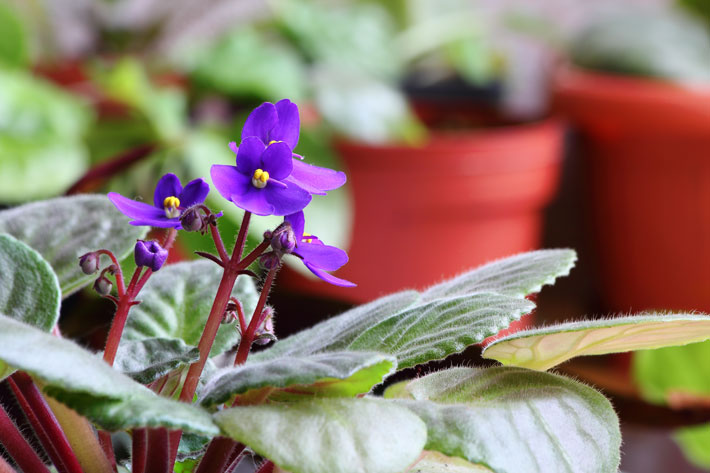
It is much easier to prevent pest or disease problems than to cure them, especially where African violets are concerned. Prevention begins with purchasing healthy plants and caring for them properly to increase their resistance to disease.
The most common pests of African violets are cyclamen mites, mealybugs and thrips. Because it is very tricky to cure a cyclamen mite problem, it is often easier to simply throw out the infested plant. Mealybugs (scales) are also difficult to destroy, as they tend to lodge in the crotches on the crown. Take a cutting, using a healthy leaf, and throw out the mother plant. The same treatment is also appropriate for thrips infestations. You may also wish to try insecticidal soap.
Springtails will sometimes appear in the soil if it is kept too damp or contains too much organic matter. It is often enough to let the soil dry out and then water less frequently.
The fungal diseases that affect African violets are generally a result of poor growing conditions.
Root, stem and crown rot, caused by Phytophtora sp. and Pythium sp. may set in if the soil is kept constantly damp. It is best to throw out any infected plants.
If humidity levels are too high, Botrytis Blight (Botrytis cinerea) or grey mould may appear on the flowers, young leaves and any dead leaves that have not been removed. The best way of preventing the problem is to use scrupulously clean pots and saucers and to groom and inspect plants regularly.

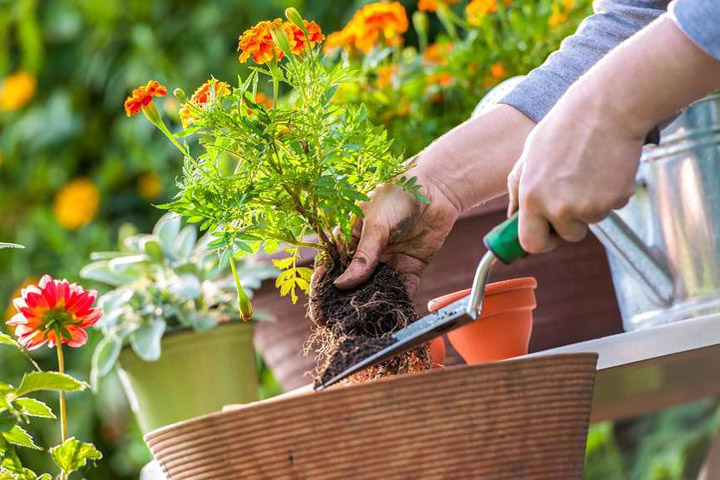
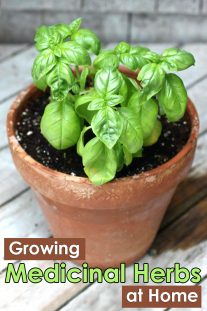
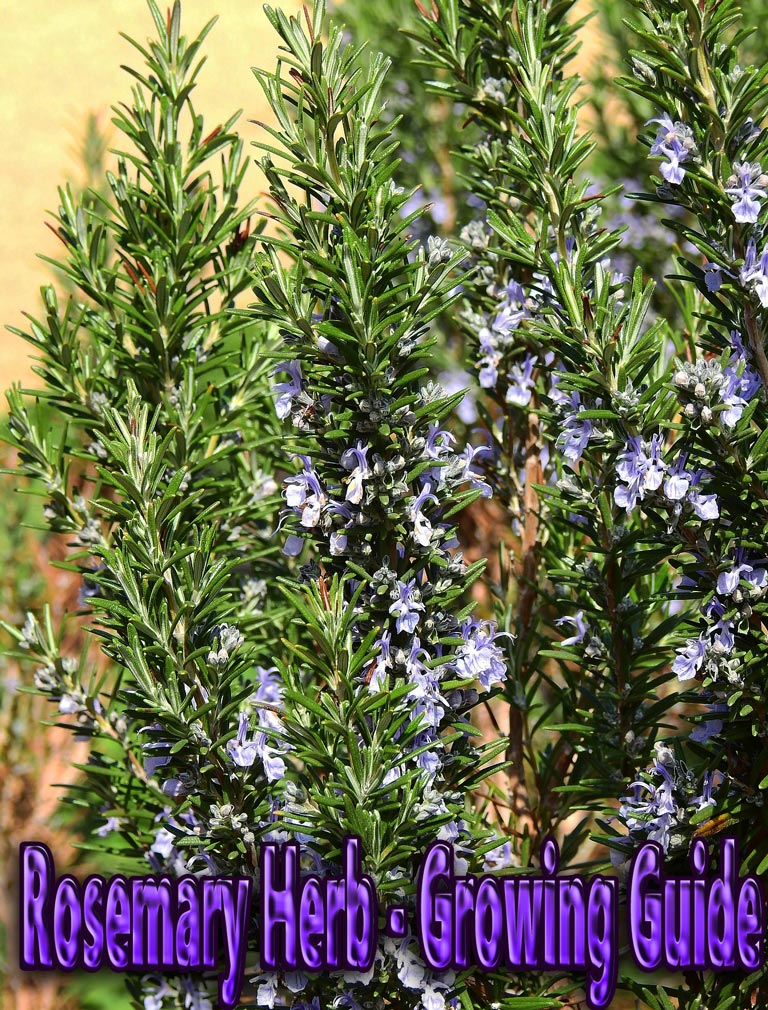
Thank you for all your great advice I love African violets can’t wait to try growing new ones from leaves
I JUST LOVE PLANTS, I AM TRYING TO GET A BOOK ON PLANTS AND FLOWERS, AND THE CARE FOR THEM .
Thank you for sharing the idea. I want to know how to hybrid to have different colors, please let me know if possible.
Thank you